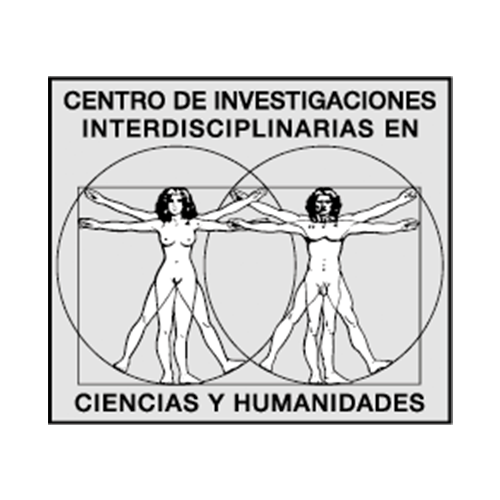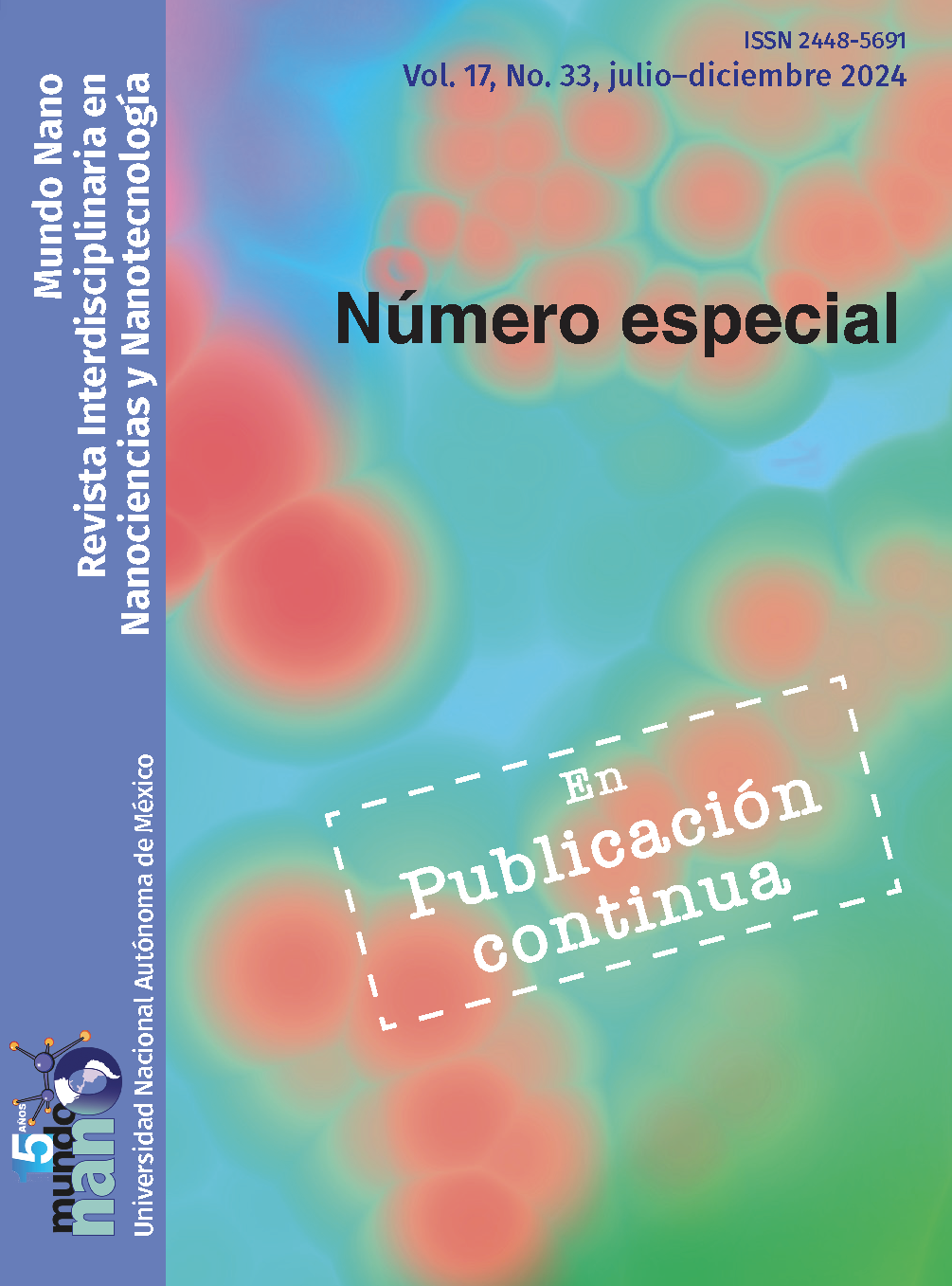Nanodispersion of TiO2 in hypochlorous acid and its antimicrobial effect against oral pathogens
Contenido principal del artículo
Resumen
El uso continuo e inadecuado de los agentes antimicrobianos tradicionalmente utilizados ha provocado el surgimiento de cepas bacterianas multirresistentes (MDR) y la mutación de microorganismos en el campo de la odontología. Por lo tanto, se han desarrollado varias nanopartículas para combatir patógenos resistentes. Las nanopartículas de dióxido de titanio (TiO2) han sido agentes antimicrobianos atractivos debido a su estabilidad química, no toxicidad y precursores económicos. Por lo tanto, las nanodispersiones basadas en TiO2 se exploraron preparándolas con agentes antimicrobianos bien conocidos, como el ácido hipocloroso (HOCl), para mejorar el efecto antimicrobiano. En este estudio, se sintetizaron y caracterizaron nanodispersiones de TiO2 NPs-HOCl basadas en sol-gel. El efecto antimicrobiano se evaluó mediante un ensayo de microdilución utilizando cepas de S. mutans, S. aureus, E. faecalis y C. albicans mediante la incubación de diferentes concentraciones de las nanodispersiones. Para evaluar los efectos citotóxicos, se inocularon células madre de la papila apical (SCAP) y se evaluaron mediante el ensayo MTT. La nanodispersión exhibió un efecto antimicrobiano mejorado, casi sin citotoxicidad. La nanodispersión basada en HOCl exhibió un mayor efecto antimicrobiano y alta estabilidad. Por lo tanto, se puede utilizar como un agente antimicrobiano prometedor para el tratamiento de diversos patógenos dentales.
Descargas
Detalles del artículo

Mundo Nano. Revista Interdisciplinaria en Nanociencias y Nanotecnología, editada por la Universidad Nacional Autónoma de México, se distribuye bajo una Licencia Creative Commons Atribución-NoComercial 4.0 Internacional.
Basada en una obra en http://www.mundonano.unam.mx.
Citas
Alvarracin-Baculima, M., Cuenca-León, K., & Pacheco-Quito, E. M. (2021). Nanopartículas antimicrobianas en odontología: estado del arte. Archivos Venezolanos de Farmacología y Terapéutica, 40(8): 839-847. https://doi.org/10.5281/ZENODO.5791388.
Argueta-Figueroa, L., Torres-Gómez, N., Scougall-Vilchis, R. J., & García-Contreras, R. (2018). Biocompatibility and nanotoxicology of titanium dioxide in the oral cavity: systematic review. Investigación Clínica (Venezuela), 59(4): 352-368. https://doi.org/10.22209/IC.v59n4a06. DOI: https://doi.org/10.22209/IC.v59n4a06
Besinis, A., De Peralta, T., & Handy, R. D. (2014). The antibacterial effects of silver, titanium dioxide and silica dioxide nanoparticles compared to the dental disinfec-tant chlorhexidine on Streptococcus mutans using a suite of bioassays. Nanotoxicology, 8(1): 1-16. https://doi.org/10.3109/17435390.2012.742935. DOI: https://doi.org/10.3109/17435390.2012.742935
Bianchi, S., Fantozzi, G., Bernardi, S., Antonouli, S., Adelaide Continenza, M., & Mac-chiarelli, G. (2020). Commercial oral hygiene products and implant collar sur-faces: scanning electron microscopy observations. Canadian Journal of Dental Hygiene, 54(1), 26. https://www.ncbi.nlm.nih.gov/pmc/articles/PMC7533810/.
Block, M. S., & Rowan, B. G. (2020). Hypochlorous acid: a review. Journal of Oral and Maxillofacial Surgery, 78(9): 1461-1466. https://doi.org/10.1016/j.joms.2020. 06.029. DOI: https://doi.org/10.1016/j.joms.2020.06.029
Brandão, F., Fernández-Bertólez, N., Rosário, F., Bessa, M. J., Fraga, S., Pásaro, E., Teixeira, J. P., Laffon, B., Valdiglesias, V., & Costa, C. (2020). Genotoxicity of TiO2 nanoparticles in four different human cell lines (A549, HEPG2, A172 and SH-SY5Y). Nanomaterials, 10(3). https://doi.org/10.3390/nano10030412. DOI: https://doi.org/10.3390/nano10030412
Büyükünal, S. K., Muratoğlu, K., & Koluman, A. (2022). The in vitro effect of hypo-chlorous acid-metal nanoparticles combination on Salmonella under different temperature conditions. Turkish Journal of Veterinary & Animal Sciences, 46(3): 439-444. https://doi.org/10.55730/1300-0128.4214. DOI: https://doi.org/10.55730/1300-0128.4214
Castillo, D. M., Castillo, Y., Delgadillo, N. A., Neuta, Y., Jola, J., Calderón, J. L., & Lafaurie, G. I. (2015). Viability and effects on bacterial proteins by oral rinses with hypochlorous acid as active ingredient. Brazilian Dental Journal, 26(5): 519-524. https://doi.org/10.1590/0103-6440201300388. DOI: https://doi.org/10.1590/0103-6440201300388
Choi, J. Y., Chung, C. J., Oh, K. T., Choi, Y. J., & Kim, K. H. K. (2009). Photocatalytic antibacterial effect of TiO2 film of TiAg on Streptococcus mutans. Angle Orthodontist, 79(3): 528-532. https://doi.org/10.2319/012108-169.1. DOI: https://doi.org/10.2319/012108-169.1
Ch-Th, T., Manisekaran, R., Santoyo-Salazar, J., Schoefs, B., Velumani, S., Castaneda, H., & Jantrania, A. (2021). Graphene oxide decorated TiO2 and BiVO4 nano-catalysts for enhanced visible-light-driven photocatalytic bacterial inactivation. Journal of Photochemistry and Photobiology A: Chemistry, 418: 113374. https://doi.org/10.1016/j.jphotochem.2021.113374. DOI: https://doi.org/10.1016/j.jphotochem.2021.113374
Dicastillo, C. L. de, Correa, M. G., Martínez, F. B., Streitt, C., & Galotto, M. J. (2020). Antimicrobial effect of titanium dioxide nanoparticles. Antimicrobial Resistance – A One Health Perspective. https://doi.org/10.5772/INTECHOPEN.90891. DOI: https://doi.org/10.5772/intechopen.90891
Eslami, N., Fasihi, F., Jamalinasab, A., & Ahrari, F. (2021). Biocompatibility of several colloidal solutions containing nanoparticles on human gingival fibroblasts. Dental Research Journal, 18(1). https://doi.org/10.4103/1735-3327.310037. DOI: https://doi.org/10.4103/1735-3327.310037
Foong, L. K., Foroughi, M. M., Mirhosseini, A. F., Safaei, M., Jahani, S., Mostafavi, M., Ebrahimpoor, N., Sharifi, M., Varma, R. S., & Khatami, M. (2020). Applications of nano-materials in diverse dentistry regimes. RSC Advances, 10(26): 15430-15460). Royal Society of Chemistry. https://doi.org/10.1039/d0ra00762e. DOI: https://doi.org/10.1039/D0RA00762E
Giti, R., Firouzmandi, M., Zare Khafri, N., & Ansarifard, E. (2022). Influence of dif-ferent concentrations of titanium dioxide and copper oxide nanoparticles on water sorption and solubility of heat-cured PMMA denture base resin. Clinical and Experimental Dental Research, 8(1), 287-293. https://doi.org/10.1002/cre2.527. DOI: https://doi.org/10.1002/cre2.527
Huang, Y. Y., Choi, H., Kushida, Y., Bhayana, B., Wang, Y., & Hamblin, M. R. (2016). Broad-spectrum antimicrobial effects of photocatalysis using titanium dioxide nanoparticles are strongly potentiated by addition of potassium iodide. Antimicrobial Agents and Chemotherapy, 60(9): 5445-5453. https://doi.org/10.1128/AAC.00980-16. DOI: https://doi.org/10.1128/AAC.00980-16
Jana, N. R. (2019). Colloidal nanoparticles: functionalization for biomedical applications. Colloidal Nanoparticles. https://doi.org/10.1201/9780429165603. DOI: https://doi.org/10.1201/9780429165603
Kaladhar Reddy, Kambalyal, P. B., Shanmugasundaram, K., Rajesh, V., Donthula, S., & Patil, S. R. (2018). Comparative evaluation of antimicrobial efficacy of silver, titanium dioxide and zinc oxide nanoparticles against streptococcus mutans. 18(1). https://doi.org/10.4034/PBOCI.2018.181.88. DOI: https://doi.org/10.4034/PBOCI.2018.181.88
Khan, S. U. M., Al-Shahry, M., & Ingler, W. B. (2002). Efficient photochemical water splitting by a chemically modified n-TiO2. Science, 297(5590): 2243-.2245. https://doi.org/10.1126/science.1075035 DOI: https://doi.org/10.1126/science.1075035
Kishimoto, N. (2019). State of the art of UV/chlorine advanced oxidation processes: theirmechanism, by products formation, process variation, and applications. Journal of Water and Environment Technology, 17(5):302-335. Japan Society on Water Environment. https://doi.org/10.2965/jwet.19-021. DOI: https://doi.org/10.2965/jwet.19-021
Kochan, O., Boitsaniuk, S., Levkiv, M., Przystupa, K., Manashchuk, N., Pohoretska, K., Chornij, N., Tsvyntarna, I., & Patskan, L. (2022). Emergence of nano-dentistry as a reality of contemporary dentistry. Applied Sciences (Switzerland), 12(4). MDPI. https://doi.org/10.3390/app12042008. DOI: https://doi.org/10.3390/app12042008
Kuwabara, M., Sato, Y., Ishihara, M., Takayama, T., Nakamura, S., Fukuda, K., Murakami, K., Yokoe, H., & Kiyosawa, T. (2020). Healing of Pseudomonasaeruginosa-infected wounds in diabetic db/db mice by weakly acidic hypochlorous acid cleansing and silver nanoparticle/chitin-nanofiber sheet covering. Wound Medicine, 28. https://doi.org/10.1016/j.wndm.2020.100183.Lafaurie, G. I., Zaror, C., Díaz-Báez, D., Castillo, D. M., De Ávila, J., Trujillo, T. G., & Calderón-Mendoza, J. (2018). Evaluation of substantivity of hypochlorous acid as an antiplaque agent: a randomized controlled trial. International Journal of Dental Hygiene, 16(4): 527-534. https://doi.org/10.1111/idh.12342. DOI: https://doi.org/10.1016/j.wndm.2020.100183
Leung, Y. H., Xu, X., Ma, A. P. Y., Liu, F., Ng, A. M. C., Shen, Z., Gethings, L. A., Guo, M. Y., Djurišic, A. B., Lee, P. K. H., Lee, H. K., Chan, W. K., & Leung, F. C. C. (2016). Toxicity of ZnO and TiO2 to Escherichia coli cells. Scientific Reports, 6. https://doi.org/10.1038/srep35243. DOI: https://doi.org/10.1038/srep35243
Madhubala, V., Pugazhendhi, A., & Thirunavukarasu, K. (2019). Cytotoxic and im-munomodulatory effects of the low concentration of titanium dioxide nanoparticles (TiO2 NPs) on human cell lines – An in vitro study. Process Biochemistry, 86: 186-195. https://doi.org/10.1016/j.procbio.2019.08.004. DOI: https://doi.org/10.1016/j.procbio.2019.08.004
Maher, M. A. (2023). Hypochlorous acid has emerged as a potential alternative to conventional antibiotics due to its broad-spectrum antimicrobial activity. International Journal of Clinical Microbiology and Biochemical Technology, 6(1): 001–004. https://doi.org/10.29328/journal.ijcmbt.1001026. DOI: https://doi.org/10.29328/journal.ijcmbt.1001026
Moaddabi, A., Soltani, P., Rengo, C., Molaei, S., Mousavi, S. J., Mehdizadeh, M., & Spagnuolo, G. (2022). Comparison of antimicrobial and wound-healing effects of silver nanoparticle and chlorhexidine mouthwashes: an in vivo study in rabbits. Odontology, 110(3): 577-583. https://doi.org/10.1007/S10266-022-00690-Z DOI: https://doi.org/10.1007/s10266-022-00690-z
Nizami, M. Z. I., Xu, V. W., Yin, I. X., Yu, O. Y., & Chu, C. H. (2021). Metal and metal oxide nanoparticles in caries prevention: a review. Nanomaterials, 11(12). MDPI. https://doi.org/10.3390/nano11123446. DOI: https://doi.org/10.3390/nano11123446
Panpaliya, N. P., Dahake, P. T., Kale, Y. J., Dadpe, M. V., Kendre, S. B., Siddiqi, A. G., & Maggavi, U. R. (2019). In vitro evaluation of antimicrobial property of silver nanoparticles and chlorhexidine against five different oral pathogenic bacteria. The Saudi Dental Journal, 31(1): 7683. https://doi.org/10.1016/J.SDENTJ.2018.10.004. DOI: https://doi.org/10.1016/j.sdentj.2018.10.004
Priyanka, K. P., Sukirtha, T. H., Balakrishna, K. M., & Varghese, T. (2016). Microbicidal activity of TiO2 nanoparticles synthesised by sol-gel method. IET Nanobio-technolog y, 10(2): 81-86. https://doi.org/10.1049/iet-nbt.2015.0038 DOI: https://doi.org/10.1049/iet-nbt.2015.0038
Prokopiuk, V., Yefimova, S., Onishchenko, A., Kapustnik, V., Myasoedov, V., Maksim-chuk, P., Butov, D., Bespalova, I., & Tkachenko, A. (2023). Assessing the cyto-toxicity of TiO2−x nanoparticles with a different Ti3+(Ti2+)/Ti4+ ratio. Biological Trace Element Research, 201(6): 3117-3130. https://doi.org/10.1007/s12011-022-03403-3. DOI: https://doi.org/10.1007/s12011-022-03403-3
Shirkavad, S., & Moslehifard, E. (2014). Effect of TiO2 nanoparticles on tensile strength of dental acrylic resins. Journal of Dental Research, Dental Clinics, Dental Prospects, 8(4): 197-203. https://doi.org/10.5681/joddd.2014.036.
Sismanoglu, S., & Ercal, P. (2022). The cytotoxic effects of various endodontic irrigants on the viability of dental mesenchymal stem cells. Australian Endodontic Journal: The Journal of the Australian Society of Endodontology Inc, 48(2): 305-312. https://doi.org/10.1111/AEJ.12570. DOI: https://doi.org/10.1111/aej.12570
Tazawa, K., Jadhav, R., Azuma, M. M., Fenno, J. C., McDonald, N. J., & Sasaki, H. (2023). Hypochlorous acid inactivates oral pathogens and a SARS-CoV-2-sur-rogate. BMC Oral Health, 23(1): 111. https://doi.org/10.1186/s12903-023-02820-7. DOI: https://doi.org/10.1186/s12903-023-02820-7
Vatansever, F., de Melo, W. C. M. A., Avci, P., Vecchio, D., Sadasivam, M., Gupta, A., Chandran, R., Karimi, M., Parizotto, N. A., Yin, R., Tegos, G. P., & Hamblin, M. R. (2013). Antimicrobial strategies centered around reactive oxygen species - bactericidal antibiotics, photodynamic therapy, and beyond. FEMS Microbiol-ogy Reviews, 37(6): 955-989. Blackwell Publishing Ltd. https://doi.org/ 10.1111/1574-6976.12026. DOI: https://doi.org/10.1111/1574-6976.12026
Wang, M., Li, J., Zhang, S., You, Y., Zhu, X., Xiang, H., Yan, L., Zhao, F., & Li, Y. (2022). Effects of titanium dioxide nanoparticles on cell growth and migration of A549 cells under simulated microgravity. Nanomaterials, 12(11). https://doi.org/10.3390/nano12111879. DOI: https://doi.org/10.3390/nano12111879
Wang, W., Gu, J., Peng, G., Li, J., Meichen, W., Kai, J., & Niu, L. (2020). Progress in the application of metal and metal oxide nanoparticles in the antibacterial modification of dental materials, 28(8). https://doi.org/10.12016/j.issn.2096•1456.2020.08.012.
Yang, J., Liu, J., Wang, P., Sun, J., Lv, X., & Diao, Y. (2021). Toxic effect of titanium dioxide nanoparticles on corneas in vitro and in vivo. Aging, 13(4): 5020-5033. https://doi.org/10.18632/aging.202412. DOI: https://doi.org/10.18632/aging.202412
Zhu, Y., Zhang, L., Gao, C. et al. (2000). The synthesis of nanosized TiO2 powder us-ing a sol-gel method with TiCl4 as a precursor. Journal of Materials Science, 35: 4049-4054. https://doi.org/10.1023/A:1004882120249. DOI: https://doi.org/10.1023/A:1004882120249





